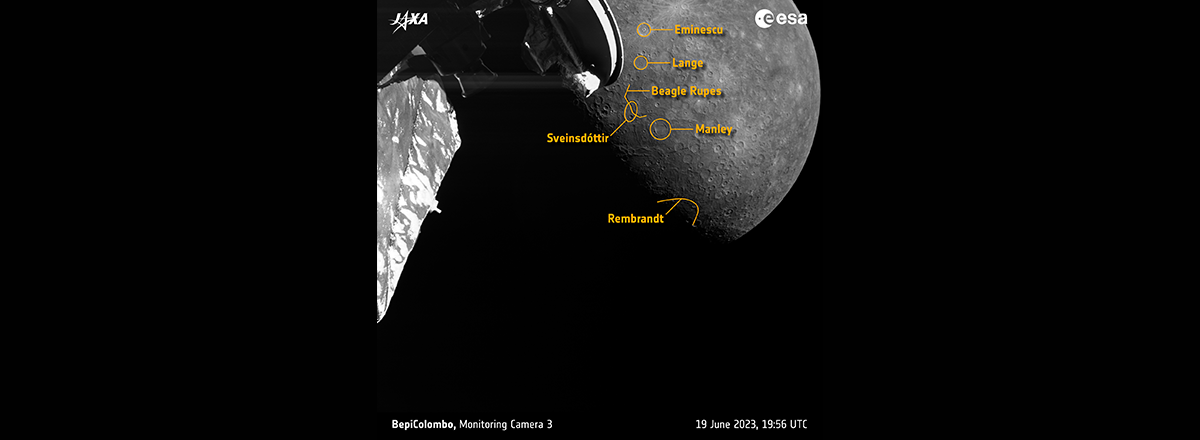BepiColombo Snaps New Images of Mercury During Its Third Flyby
During its recent flyby, BepiColombo made measurements of the planet's environment and snapped images of its scorched surface. The European Space Agency (ESA) released the first batch of images just 24 hours after the closest approach.

BepiColombo, the joint European and Japanese mission to explore Mercury, has captured stunning new images of the planet during its third flyby. The spacecraft flew within 150 miles (240 kilometers) of Mercury's surface, providing up-close views of its craters and other geological features.
During its recent flyby, BepiColombo made measurements of the planet's environment and snapped images of its scorched surface. The European Space Agency (ESA) released the first batch of images just 24 hours after the closest approach.
The images showcase the geologic diversity of Mercury, revealing numerous craters, ancient volcanic ridges, and lava flows. One notable feature is the newly named Edna Manley crater, which excavated dark "low-reflectance material" that may offer insights into Mercury's early carbon-rich crust. The basin floor within the crater also exhibits smooth lava, indicating the planet's history of volcanic activity.
The Beagle Rupes escarpment, a 370-mile-long (600 km) cliff formed during the planet's cooling and contracting phase billions of years ago, was also spotted by BepiColombo. Scientists are eager to compare these images with those obtained by NASA's Messenger mission, which orbited Mercury from 2011 to 2015, to gain a deeper understanding of the planet's tectonic history.
BepiColombo has three more flybys of Mercury scheduled before it sheds enough energy to enter the planet's orbit in late 2025.

